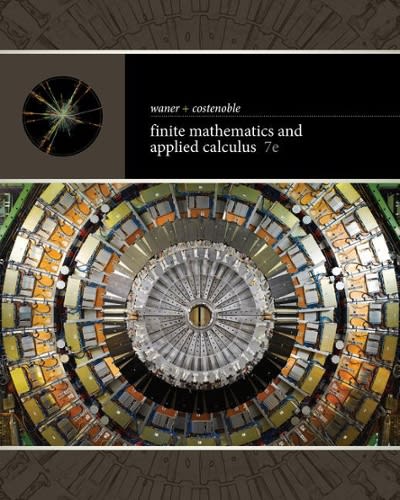Question
Let Dn be the demand for an item at a store on day n. Suppose that {Dn, n ? 0} is an i.i.d. sequence of
Let Dn be the demand for an item at a store on day n. Suppose that {Dn, n ? 0} is an i.i.d. sequence of random variables with common PMF: pk = P[Dn = k], k = 0, 1, 2, . . .. Suppose the store follows the following inventory management policy: If inventory at the end of the nth day (i.e., after satisfying the demands during that day) is at least s (where s > 0), the store does nothing. If it is less than s, then the store orders enough amount to bring the inventory at the beginning of the next day up to S (where S ? s). Assume that delivery to the store is instantaneous. Let Xn denote the amount of inventory in the store at the beginning of the nth day (before satisfying that day's demand, but after the inventory is replenished). Show that {Xn, n ? 0} is a DTMC. Display its transition probability matrix. Consider the system with the following parameters: S = 10, s = 3 and {Di} are i.i.d. Poisson with mean 3. Simulate the system for n = 105 periods and estimate the average amount of demand lost per day. Assume that the initial inventory is S

Step by Step Solution
There are 3 Steps involved in it
Step: 1

Get Instant Access to Expert-Tailored Solutions
See step-by-step solutions with expert insights and AI powered tools for academic success
Step: 2

Step: 3

Ace Your Homework with AI
Get the answers you need in no time with our AI-driven, step-by-step assistance
Get Started


